Text
My best friend is dead.
How the fuck do I deal with this?
7 notes
·
View notes
Text
do you ever just want to shout like… it’s because i’m sad! like yes i didn’t do my homework, yes i didn’t text you back, yes i’ve been hiding in my room! i’m sorry! but i haven’t killed myself so honestly where is my badge!
433K notes
·
View notes
Photo

177K notes
·
View notes
Video
But I’m still wigglin’. Always wigglin’.
33 notes
·
View notes
Text
So, I may have accidentally adopted a convict...
1 note
·
View note
Photo

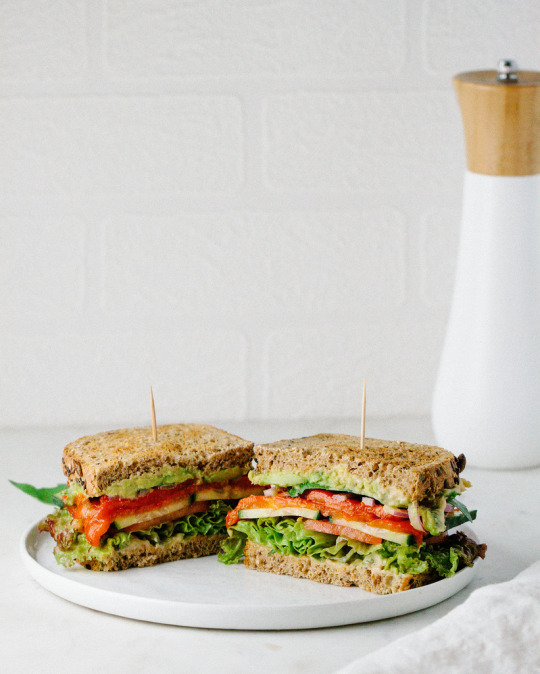
Roasted red pepper + hummus + avocado sandwich / Recipe
1K notes
·
View notes
Photo
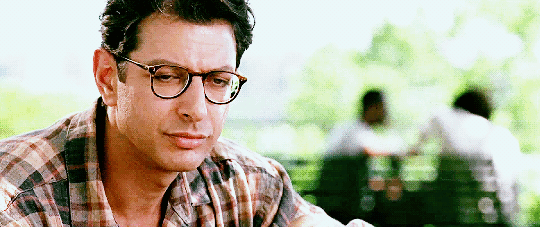

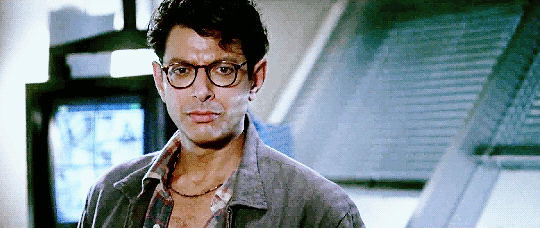


A 4th of July celebration in the form of David Levinson’s finest enticing gazes
4K notes
·
View notes
Photo
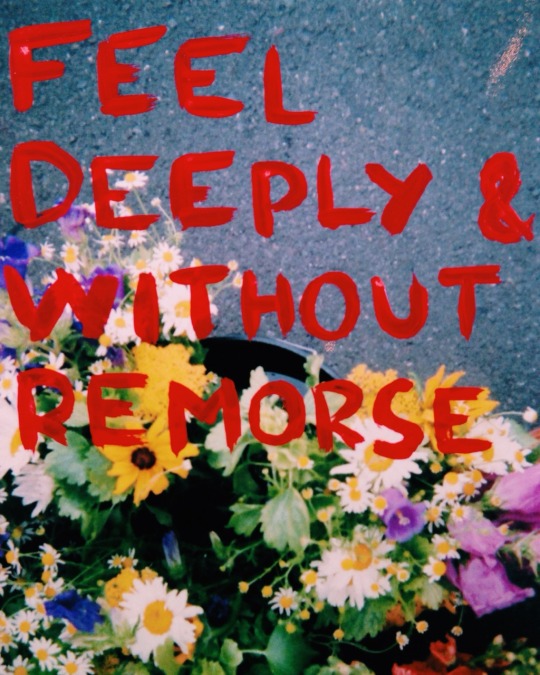
66K notes
·
View notes
Photo

5K notes
·
View notes
Text
Well, then!
What is the evolutionary benefit or purpose of having periods? Why can’t women just get pregnant without the menstrual cycle?
Suzanne Sadedin, Ph.D. in evolutionary biology from Monash University
I’m so glad you asked. Seriously. The answer to this question is one of the most illuminating and disturbing stories in human evolutionary biology, and almost nobody knows about it. And so, O my friends, gather close, and hear the extraordinary tale of:
HOW THE WOMAN GOT HER PERIOD
Contrary to popular belief, most mammals do not menstruate. In fact, it’s a feature exclusive to the higher primates and certain bats*. What’s more, modern women menstruate vastly more than any other animal. And it’s bloody stupid (sorry). A shameful waste of nutrients, disabling, and a dead giveaway to any nearby predators. To understand why we do it, you must first understand that you have been lied to, throughout your life, about the most intimate relationship you will ever experience: the mother-fetus bond.
Isn’t pregnancy beautiful? Look at any book about it. There’s the future mother, one hand resting gently on her belly. Her eyes misty with love and wonder. You sense she will do anything to nurture and protect this baby. And when you flip open the book, you read about more about this glorious symbiosis, the absolute altruism of female physiology designing a perfect environment for the growth of her child.
If you’ve actually been pregnant, you might know that the real story has some wrinkles. Those moments of sheer unadulterated altruism exist, but they’re interspersed with weeks or months of overwhelming nausea, exhaustion, crippling backache, incontinence, blood pressure issues and anxiety that you’ll be among the 15% of women who experience life-threatening complications.
From the perspective of most mammals, this is just crazy. Most mammals sail through pregnancy quite cheerfully, dodging predators and catching prey, even if they’re delivering litters of 12. So what makes us so special? The answer lies in our bizarre placenta. In most mammals, the placenta, which is part of the fetus, just interfaces with the surface of the mother’s blood vessels, allowing nutrients to cross to the little darling. Marsupials don’t even let their fetuses get to the blood: they merely secrete a sort of milk through the uterine wall. Only a few mammalian groups, including primates and mice, have evolved what is known as a “hemochorial” placenta, and ours is possibly the nastiest of all.
Inside the uterus we have a thick layer of endometrial tissue, which contains only tiny blood vessels. The endometrium seals off our main blood supply from the newly implanted embryo. The growing placenta literally burrows through this layer, rips into arterial walls and re-wires them to channel blood straight to the hungry embryo. It delves deep into the surrounding tissues, razes them and pumps the arteries full of hormones so they expand into the space created. It paralyzes these arteries so the mother cannot even constrict them.
What this means is that the growing fetus now has direct, unrestricted access to its mother’s blood supply. It can manufacture hormones and use them to manipulate her. It can, for instance, increase her blood sugar, dilate her arteries, and inflate her blood pressure to provide itself with more nutrients. And it does. Some fetal cells find their way through the placenta and into the mother’s bloodstream. They will grow in her blood and organs, and even in her brain, for the rest of her life, making her a genetic chimera**.
This might seem rather disrespectful. In fact, it’s sibling rivalry at its evolutionary best. You see, mother and fetus have quite distinct evolutionary interests. The mother ‘wants’ to dedicate approximately equal resources to all her surviving children, including possible future children, and none to those who will die. The fetus ‘wants’ to survive, and take as much as it can get. (The quotes are to indicate that this isn’t about what they consciously want, but about what evolution tends to optimize.)
There’s also a third player here – the father, whose interests align still less with the mother’s because her other offspring may not be his. Through a process called genomic imprinting, certain fetal genes inherited from the father can activate in the placenta. These genes ruthlessly promote the welfare of the offspring at the mother’s expense.
How did we come to acquire this ravenous hemochorial placenta which gives our fetuses and their fathers such unusual power? Whilst we can see some trend toward increasingly invasive placentae within primates, the full answer is lost in the mists of time. Uteri do not fossilize well.
The consequences, however, are clear. Normal mammalian pregnancy is a well-ordered affair because the mother is a despot. Her offspring live or die at her will; she controls their nutrient supply, and she can expel or reabsorb them any time. Human pregnancy, on the other hand, is run by committee – and not just any committee, but one whose members often have very different, competing interests and share only partial information. It’s a tug-of-war that not infrequently deteriorates to a tussle and, occasionally, to outright warfare. Many potentially lethal disorders, such as ectopic pregnancy, gestational diabetes, and pre-eclampsia can be traced to mis-steps in this intimate game.
What does all this have to do with menstruation? We’re getting there.
From a female perspective, pregnancy is always a huge investment. Even more so if her species has a hemochorial placenta. Once that placenta is in place, she not only loses full control of her own hormones, she also risks hemorrhage when it comes out. So it makes sense that females want to screen embryos very, very carefully. Going through pregnancy with a weak, inviable or even sub-par fetus isn’t worth it.
That’s where the endometrium comes in. You’ve probably read about how the endometrium is this snuggly, welcoming environment just waiting to enfold the delicate young embryo in its nurturing embrace. In fact, it’s quite the reverse. Researchers, bless their curious little hearts, have tried to implant embryos all over the bodies of mice. The single most difficult place for them to grow was – the endometrium.
Far from offering a nurturing embrace, the endometrium is a lethal testing-ground which only the toughest embryos survive. The longer the female can delay that placenta reaching her bloodstream, the longer she has to decide if she wants to dispose of this embryo without significant cost. The embryo, in contrast, wants to implant its placenta as quickly as possible, both to obtain access to its mother’s rich blood, and to increase her stake in its survival. For this reason, the endometrium got thicker and tougher – and the fetal placenta got correspondingly more aggressive.
But this development posed a further problem: what to do when the embryo died or was stuck half-alive in the uterus? The blood supply to the endometrial surface must be restricted, or the embryo would simply attach the placenta there. But restricting the blood supply makes the tissue weakly responsive to hormonal signals from the mother – and potentially more responsive to signals from nearby embryos, who naturally would like to persuade the endometrium to be more friendly. In addition, this makes it vulnerable to infection, especially when it already contains dead and dying tissues.
The solution, for higher primates, was to slough off the whole superficial endometrium – dying embryos and all – after every ovulation that didn’t result in a healthy pregnancy. It’s not exactly brilliant, but it works, and most importantly, it’s easily achieved by making some alterations to a chemical pathway normally used by the fetus during pregnancy. In other words, it’s just the kind of effect natural selection is renowned for: odd, hackish solutions that work to solve proximate problems. It’s not quite as bad as it seems, because in nature, women would experience periods quite rarely – probably no more than a few tens of times in their lives between lactational amenorrhea and pregnancies***.
We don’t really know how our hyper-aggressive placenta is linked to the other traits that combine to make humanity unique. But these traits did emerge together somehow, and that means in some sense the ancients were perhaps right. When we metaphorically ‘ate the fruit of knowledge’ – when we began our journey toward science and technology that would separate us from innocent animals and also lead to our peculiar sense of sexual morality – perhaps that was the same time the unique suffering of menstruation, pregnancy and childbirth was inflicted on women. All thanks to the evolution of the hemochorial placenta.
https://www.quora.com/what-is-the-evolutionary-benefit-or-purpose-of-having-periods
35K notes
·
View notes
Text
Honestly?
I’m one of the least poly people I know. And I even know I’m not poly.
0 notes
Text
Dad Transforms His Daughter’s Bedroom Into A Magical Reading Outpost Based On Fairy Tales In 18 Months

“My daughter wanted a fairy tree in her room that she could sit inside and read books”
Serious contender for the father of the year award, Reddit user radamshome created a colossal fairy tree in 18 months with his own hands, making his daughter’s dream come true. Strenuously constructing a gnarly tree that strecthes its winding branches across the ceiling, it substitutes as a quiet spot for a nice read in the corner of his daughter’s room, and the project took over 350 hours and 4,250 USD to make.
Despite radamshome’s greatest fear of the possibility of the tree being dismantled “when she’s 13 and wants it removed from her room”, the magical concrete and rebar tree has been built to last till a happily ever after and can also hold the weight of three adults.
Radamshome who describes himself as an “artist in the video game industry,”, was initially “un-prepared for the physical realities of the project”, but dedicated his full efforts to making it happen. Starting from a concept drawing to a scale model, then welding classes which manifested into a giant painted tree fit for every girl’s dream, the father has created an elaborate and magical gift for his young daughter.

“I was kind of un-prepared for the physical realities of this project….”

18 months and 350 hours were spent to complete the project

Radamshome, who is an artist in the video game industry, began with a concept drawing and a scale model
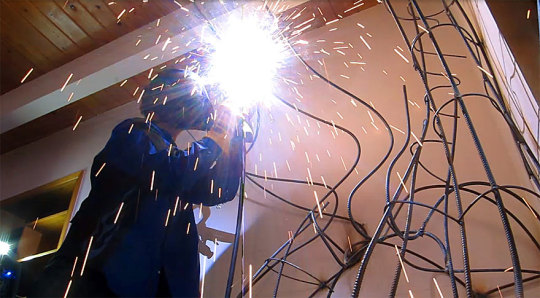
He took private welding courses to make the tree skeleton structurally sound
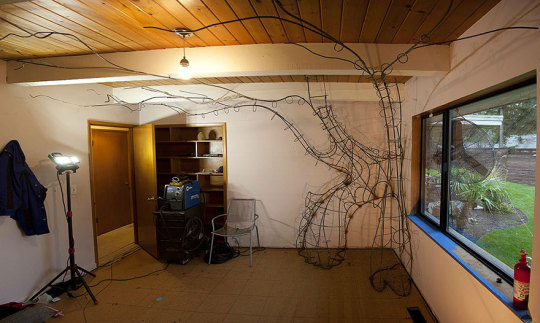
After over 100-120 hours, the skeleton was complete

It took another 50+ hours to apply the wire “skin” to the rebar

A special mixture of cement was used for the tree trunk, and papier-mâché for the branches. Total time so far: 225 hours

The dad used to paint miniatures as a teenager, so he used the same techniques to paint the tree

He wove Christmas lights, capable of being dimmed, into the branches to simulate stars

The fairy details and tree decorations were found at a Michael’s art supply store

One happy camper! The tree is actually strong enough to support three adults!
32K notes
·
View notes
Photo

In Britain only, Guinness estimates almost 93,000 liters of beer are lost each year in mustaches and beards.
3K notes
·
View notes



